Customizing hoodies is a popular trend and a fun and creative way among individuals and businesses looking to express creativity, promote a brand or event, or simply create a unique and personalized wearable. Hoodies make great gifts, group uniforms, or casual wear, you'll find plenty of options to customize your hoodies.
Want to design custom hoodies but feeling overwhelmed by the different styles, fabrics, and printing methods? Don’t fret, we’re here to equip you with all the knowledge you need to boost profits when selling hoodies online.
Hoodies have evolved from leisure and athletic attire into fashion-forward pieces, becoming a key part of any wardrobe. A custom hoodie can easily elevate a casual streetwear outfit while also keeping you warm. Plus, they offer plenty of fabric real estate for artistic expression.
Let’s explore how to design a hoodie with your personalized print and logo, as well as best practices to make your hoodie business thrive.
1. Design creation:
a. Decide on the design or image you want or determine the theme or message you want to convey to print on your hoodie. This could be a logo, text, or a graphic. Consider your target audience, occasion, or purpose for customizing the hoodies.
b. Use free online design tools like Canva, Adobe Illustrator, or GIMP to create your design, if you're not a designer. Alternatively, you can hire a graphic designer to create a custom design for you.
c. Keep your design simple and clean, considering the print size and placement on the hoodie.
d. Save your design in a high-resolution format, such as JPEG or PNG, for printing or embroidery.
2. Choose a printing or embroidery method:
a. Screen printing: Screen printing works best for solid graphics without small details. Think basic typography, geometric designs, symbols, and shapes. That’s because making stencils for intricate designs is time-consuming and it’s difficult to get the details right during the printing process. Since each color is applied separately, screen printing is also mostly used for designs with few colors. Print providers often limit how many colors you can have in your design, and usually no more than 9 are allowed. This is the most common and budget-friendly printing method. It works well for simple designs and solid color hoodies.
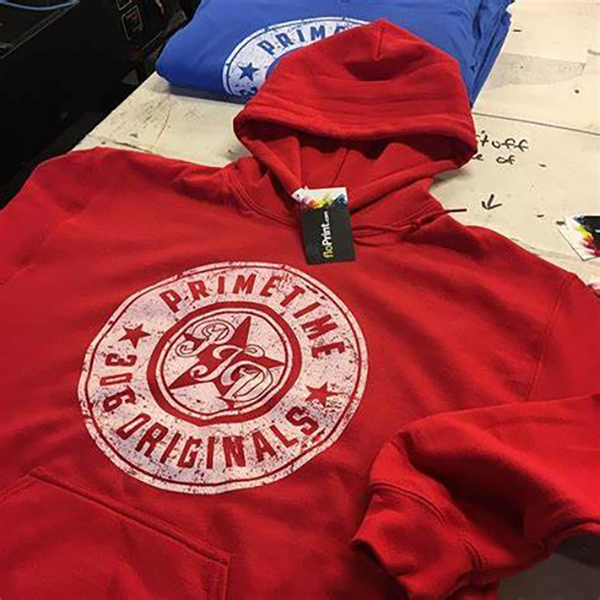
b. Digital printing: DTG printing, or direct-to-garment printing, involves spraying ink directly onto the garment which penetrates the fabric’s fibers. It’s similar to printing on paper but applied to clothing. This method works best with natural fibers, like 100% cotton, but it’s also great for cotton blends. DTG printing offers a wide range of vibrant colors and freedom of expression in the design process. The prints are soft, breathable, and very durable. Unlike screen printing, you can create highly detailed designs that print beautifully. Direct-to-garment printing is also way more sustainable since there are no order minimums. This means you don’t need to print any garments in bulk without being sure they’ll sell—simply print your orders as they come in. What’s more, our DTG printing partner Kornit uses machines that produce almost zero wastewater and consume less energy. For detailed designs and photos, digital printing offers better quality. However, it tends to be more expensive than screen printing.
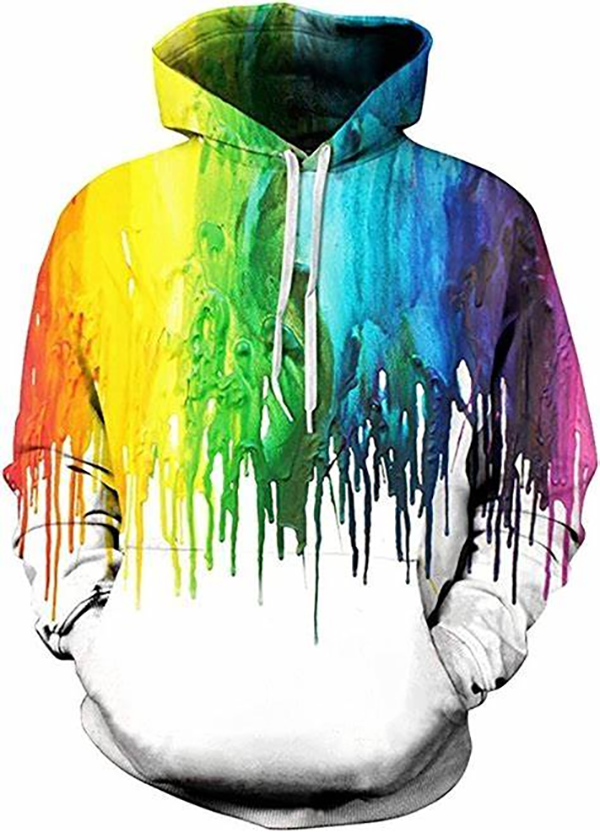
c. Embroidery: Embroidery never truly goes out of style. In fact, it’s grown in popularity over the past few years. The elegant details bring a sense of luxury to any custom hoodie, whether it’s a logo, a meaningful symbol, or a whimsical design. Custom embroidery on hoodies is the ideal blend of artistic charm and casual comfort. The hoodie’s thick material also allows you to embroider larger designs that aren’t possible to put on a shirt. Plus, the textured, raised finish of embroidery designs adds depth and dimension to the fabric. These designs are alive and vibrant, and exude charm, personality, and uniqueness in every stitch. For a more luxurious and professional touch, embroidery is a great option. It works well for logos, names, or simple designs.
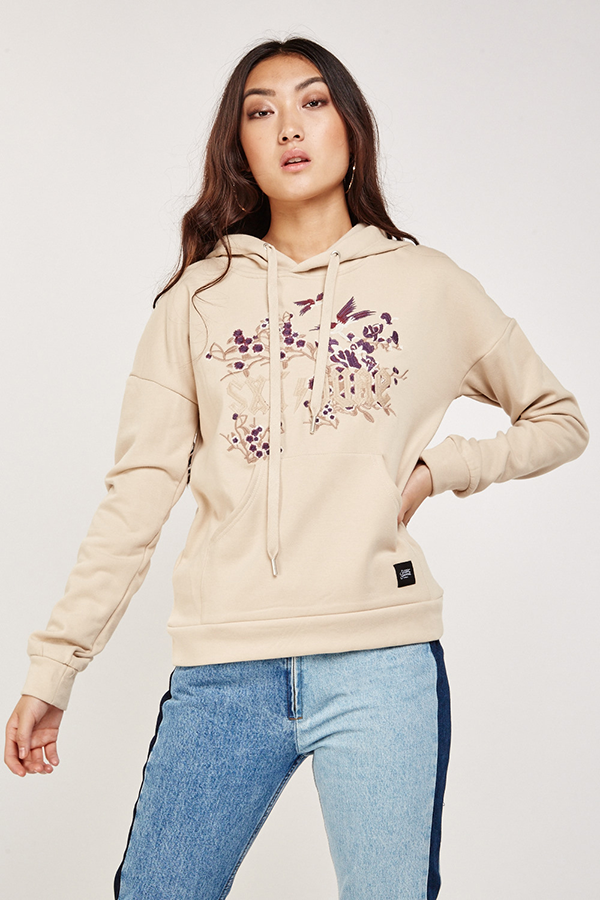
3. Select a hoodie style and color:
a. Choose from various hoodie styles such as pullover, zip-up, crewneck, or hoodless options. But actually hoodies come in two main styles: pullover and zip-up.
Pullover hoodies typically have a kangaroo pocket and a drawstring hood and are made to be pulled on over the head. They’re simple to wear and have a laid-back, casual look.
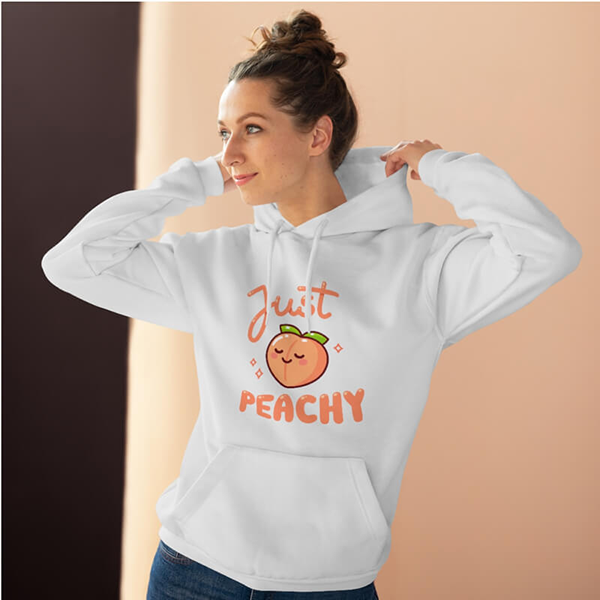
Zip-up hoodies have a full zip closure that lets you wear them open or closed for various looks. They typically have a drawstring hood and two front pockets. They’re excellent as layering pieces or for athletes because they’re easy to remove and generally lightweight.
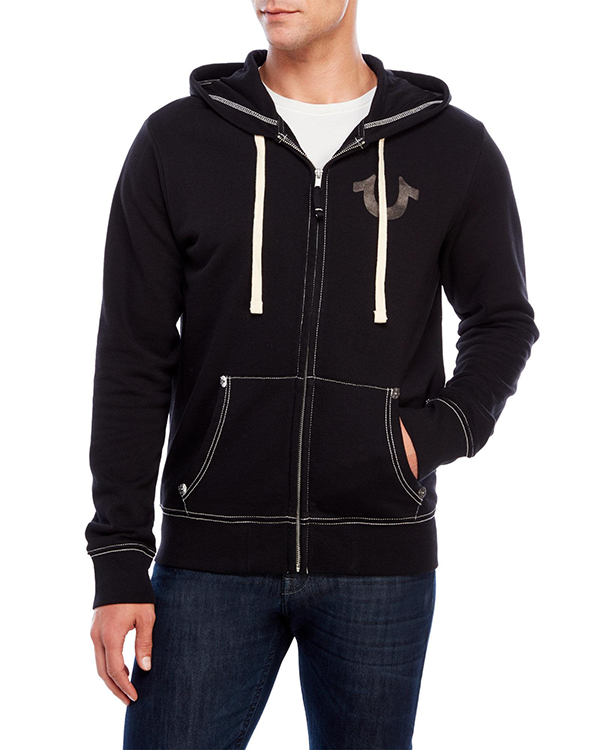
b. Select a fabric type, such as cotton, polyester, or a blend, depending on your desired comfort level and washability. Depending on the manufacturing process, hoodie fabric can have varying durability, appearance, and texture. Fabric blends combine different fiber types to take advantage of each one’s strengths and make up for their weaknesses. Natural fibers, like cotton, are absorbent and breathable, and feel soft against the skin, making them ideal for daily wear. Polyester and other synthetic fibers resist wrinkles and shrinkage, and they’re more durable in the long term. It’s no wonder fabric blends are so popular with hoodies!
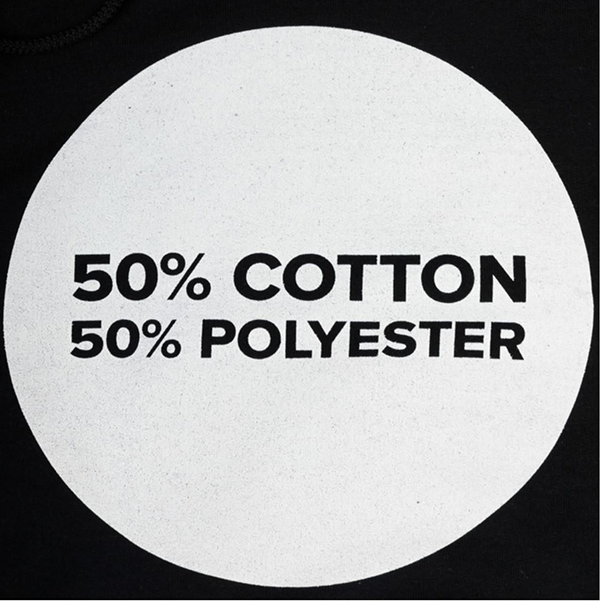
c. Choose the proper weight for the hoodies. Fabric weight should influence your choice when customizing sweatshirts. Lighter, thinner fabrics are more breathable, making them perfect for layering or warmer weather. They’re great for blocking a chilly breeze while not breaking a sweat. Heavier, thicker fabrics offer more insulation and warmth. They can be made from thick cotton or fleece since both are suitable for colder climates. When choosing a hoodie, consider your brand’s vision, customer demand, and the coming season. Nobody’s going to want a bulky hoodie in the summer months, but, in winter, that extra cozy, hefty layer can be your best friend.
d. Pick a color that complements your design or matches your theme.
Blue and orange: These complementary colors create a dynamic and eye-catching combination. Blue represents trust, stability, and calm, while orange symbolizes energy, warmth, and optimism.
Green and pink: This combination is perfect for projects targeting a younger audience or feminine themes. Green symbolizes nature, wellness, and tranquility, while pink represents playfulness, joy, and creativity.
Red and yellow: These primary colors combine to create a bold and vibrant scheme. Red stands for passion, power, and attention, while yellow signifies happiness, energy, and optimism.
Purple and gold: This luxurious pairing is ideal for weddings, royal themes, or high-end designs. Purple represents sophistication, luxury, and creativity, while gold symbolizes wealth, success, and warmth.
Black and white: A classic and versatile combination, black and white can be dressed up or down depending on the context. Black denotes sophistication, elegance, and mystery, while white signifies simplicity, purity, and honesty.
Remember to consider your design or your theme, and the overall context of your design when choosing a color palette. You can also use color wheel theory to find complementary or analogous colors that work well together. Finally, don't hesitate to experiment with different color combinations to find the one that best suits your vision.
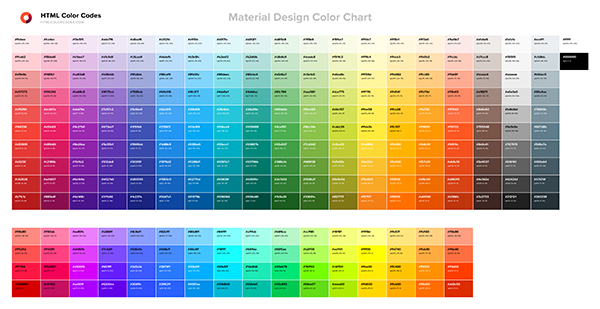
4. Determine the quantity:
a. Consider ordering extra hoodies for future sales or gifts.
b.You can order just one hoodie or buy in bulk; there are no order minimums.
c.Ordering in bulk can help you negotiate better prices and achieve a higher level of customization. Before you order in bulk for your custom sweatshirts online, order samples to check that everything is perfect. Product quality is one of the most important factors in e commerce. Since your printing partner is responsible for product creation, printing, and packaging, they’re also in charge of quality assurance.
5. Budget calculation:
a. Estimate the cost of materials, printing or embroidery, and shipping.
b. Factor in the cost of any additional customization options, such as different colors or styles.
c. Remember to stay within your 1,500-word budget limit.
6. Place your order:
a. Research and compare various printing or embroidery companies to ensure quality and pricing meet your expectations.
b. Submit your design, hoodie style, color, and quantity to the chosen supplier.
c. Confirm the order details, pricing, and expected delivery time.
7. Wait for delivery:
a. Once your order is processed and completed, expect delivery within the estimated time frame.
b. Inspect the hoodies upon arrival to ensure quality and accuracy.
8. Distribution and storage:
a. Distribute the customized hoodies to your target audience, whether it's your friends, family, or customers.
b. Store extra hoodies in a clean, dry place for future use or sale.
9. Marketing and promotion:
a. Showcase your customized hoodies on social media to generate interest and attract buyers.
b. Collaborate with influencers or local businesses to help promote your brand or cause.
In conclusion, customizing hoodies is achievable by following these steps. By planning ahead, selecting the right design, printing or embroidery method, and choosing affordable options, you can create unique and stylish hoodies that meet your budget and expectations.
Happy customizing!
Post time: Nov-15-2023





